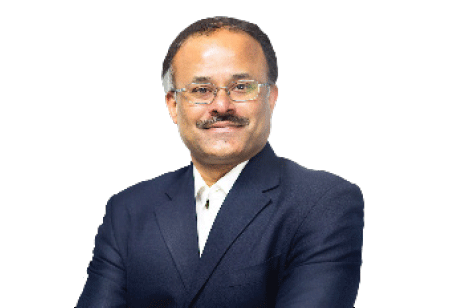The Value Is In Care
By Guru Prasad, Director – Healthcare, Bosch

Guru Prasad, Director – Healthcare, Bosch
The Bosch Group is a leading global supplier of technology and services. The Bosch Group’s strategic objective is to create solutions for a connected life, and to improve quality of life worldwide with products and services that are innovative and spark enthusiasm. In short, Bosch creates technology that is “Invented for life.
As we settle into the mid-year mark of 2018, there is no doubt that technology in the field of healthcare is transcending to become something we cannot ignore or live without. It has surpassed the realm of convenience and has become lifesaving.
At one end of the technology spectrum, we see advent of newer trends like block chain, artificial intelligence and mobile enabled health. Technology plays a key enabler in this movement from traditional to transformative care, and acts as a force multiplier to connect, communicate and provide care. Advancements in machine learning, artificial intelligence, deep learning, helps to predict and provide care that is more personalized and resource efficient. At the other end, there are several market forces at play, like changing regulations and customer expectations.
With these two forces operating, discussions and deliberations would be inevitable, to pick the clear winners in terms of healthcare information technology. A guiding light for picking the best technology could be those which address market trends that have a huge impact. Skewed ratio between caregivers and patients, rising healthcare delivery costs, quantified self or ‘ME’ generation, move from reactive to preventive care are some of the most pressing market needs and trends.
Amongst all of these changing market scenarios, the biggest and most powerful change that we currently see is the movement from more with less, shifting from volume to value. ‘Value based Care’ as the name suggests, aims to advance the triple aim of providing better care for individuals, improving population health management strategies, and reducing healthcare delivery costs. Though it is primarily viewed as a change in the existing payment models, at the heart of this change is actually a new care delivery model.
Value based care across the world would be a key movement and a transition from core to care, with patient at the heart of this care delivery. Compared to the existing system of a service based management, the health ecosystem would work in tandem to ensure outcome based health management is delivered to the patient.
To realize the potential and to make value based care a reality, a judicious combination of key technologies, such as the Internet of things (via Sensors and Devices), Intelligence (via smart Software and Algorithms), and Integration (via effective Service and Revenue models) touted as the “3I” system would be required.
“Skewed ratio between caregivers and patients, rising healthcare delivery costs, quantified self or ‘ME’ generation, move from reactive to preventive care are some of the most pressing market needs and trends”
With the advent of value-based care, and in consideration of the three key pillars of realizing the same, there are various technological investments, which we should consider:
1. Patient Engagement: It is becoming increasingly important to keep patients informed and get them involved in their own treatment. That includes generating their own health data and transmitting it to clinicians, allowing caregivers to better coordinate care, therefore lower costs, and improve quality of service. Some of the technologies to consider for this patient centricity shift are:
a. IoT enabled Connected Health Exchange Platforms with strong device side edge computing capabilities and intelligent algorithm based processing engines
b. Proactive, context sensitive feedback options to seamlessly enable holistic patient involvement
2. Provider Efficiency: Providers are placing a heightened emphasis on Quality/Care improvement programs. Clinicians need a better understanding of how patients are responding to treatment and what leads to better health. Hospital administrators are finding ways to engage patients actively to make them adhere to the care outcome. Some of the technologies to consider for this provider engagement are:
a. Intelligent therapy platforms to monitor patient therapy outcomes with real-time access
b. Remote and Virtual monitoring Platforms with seamless patient record sharing and interoperability capabilities
c. Predictive analytics driven evidence based insights.
3. Social Health: Population health management is key to value-based care. We are after all, a microcosmic manifestation of the environments we live in. By effective identification, classification and management of high risk population, social health programs and chronic lifestyle conditions management, can be better targeted with a higher positive outcome.
a. Custom dashboard reporting on patient population with real-time access to complete patient data and historical trends to have a targeted interventions of inlier population to save cost
b. Population data analytics with social determinants of health, to provide a holistic heat map and dashboard for targeted management.
c. Risk stratification and predictive analytics for identifying high at risk patients for lifestyle management.
A combination of smartly integrated sensors, software and solutions, would be the way forward to realize value based care.
Drawing parallels to the overall healthcare scenario, though there are many newer technologies, and multiple innovations in healthcare, the strength of these systems and long term sustenance of these trends, is purely based on how they come together in alignment with changing consumer expectations and needs. The investments on technology should not be a test of even I can do it, but rather how they can come together to solve a market problem.







